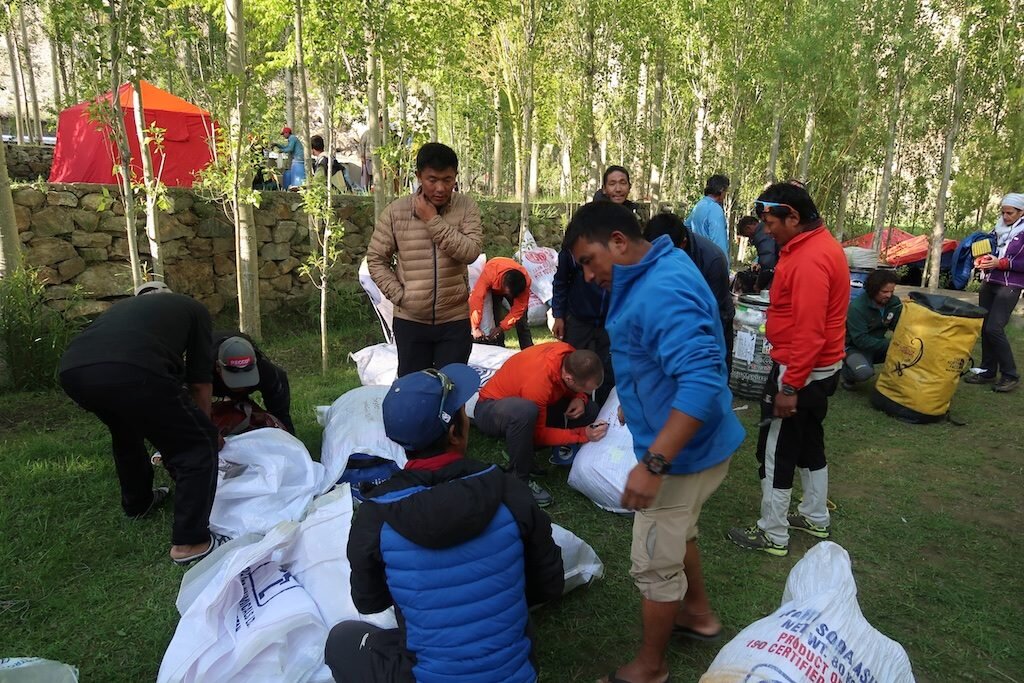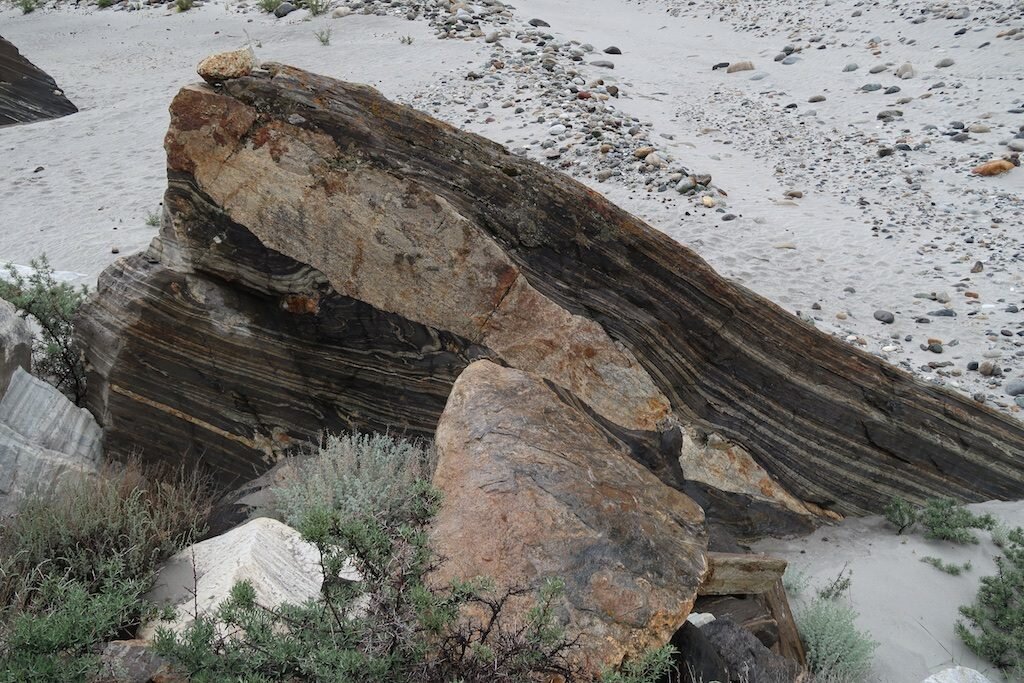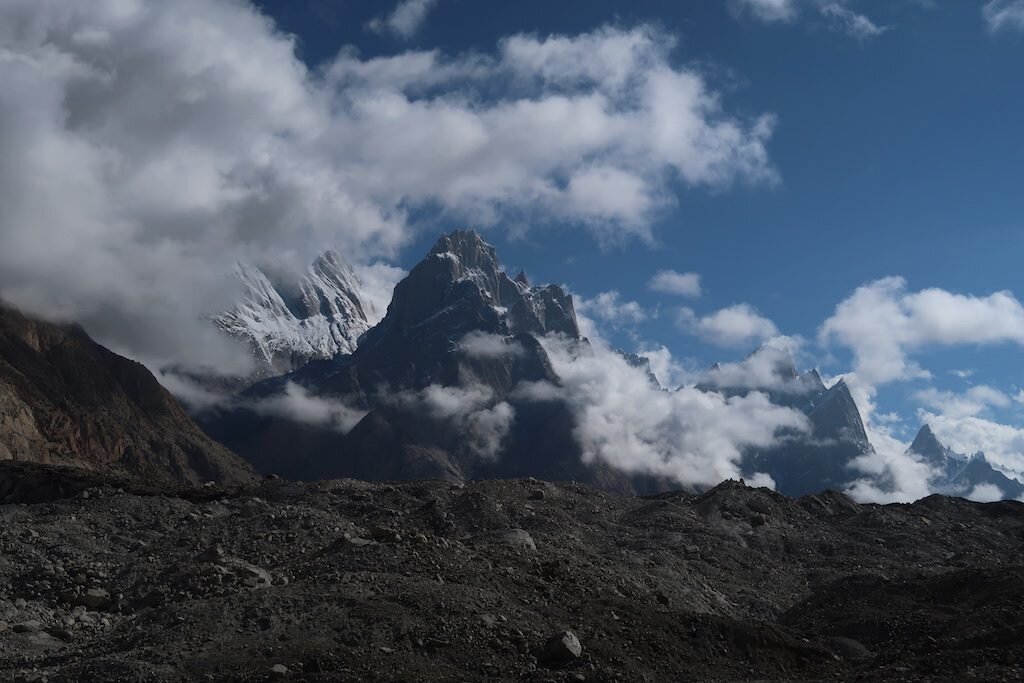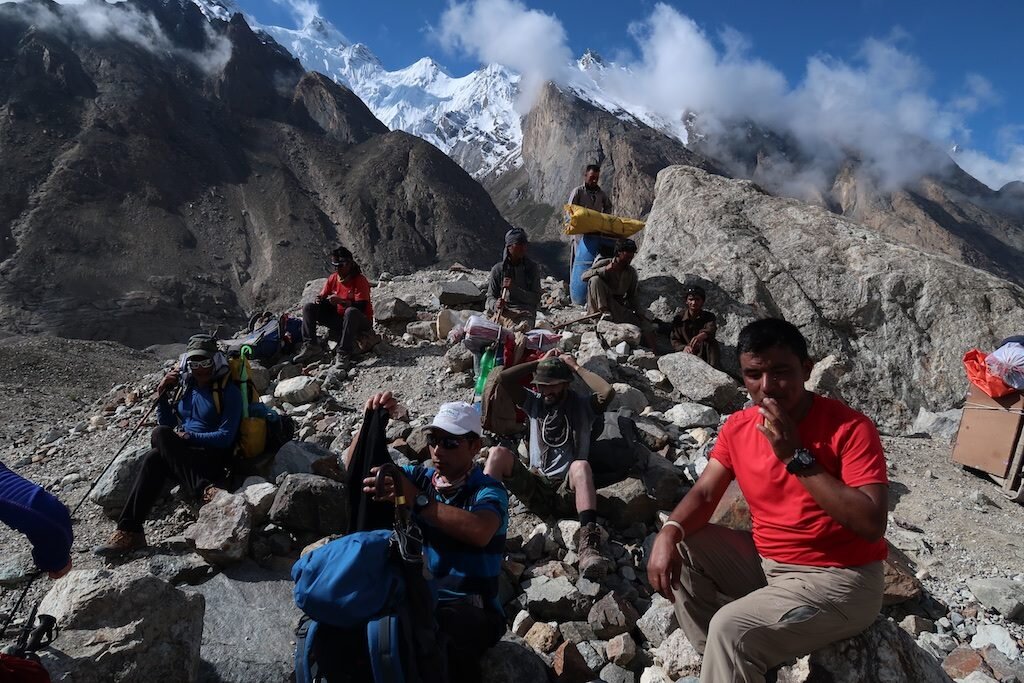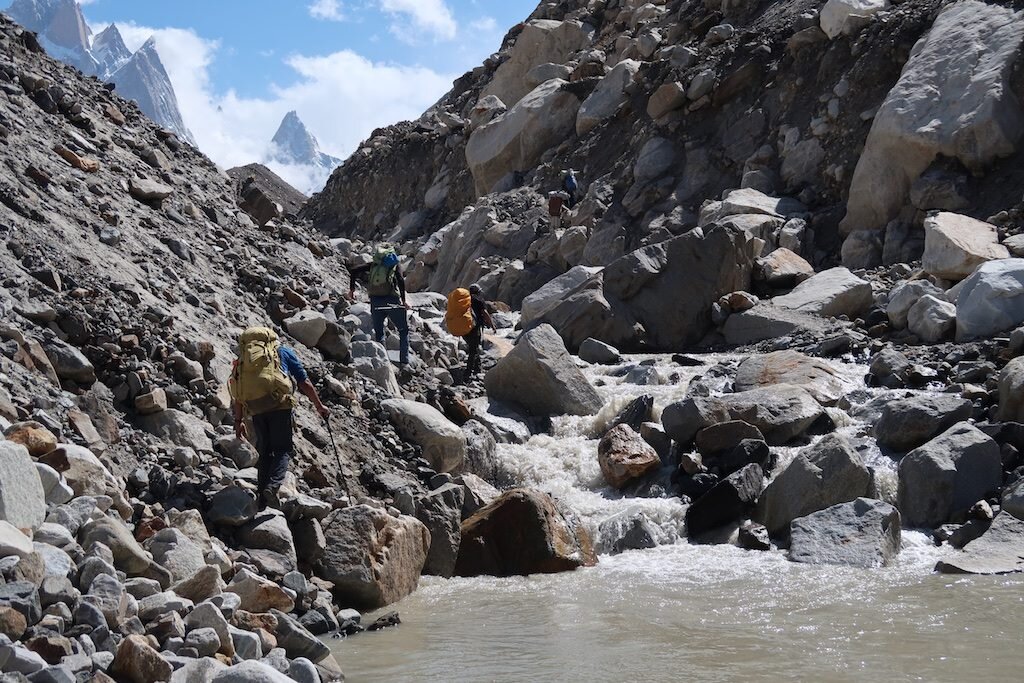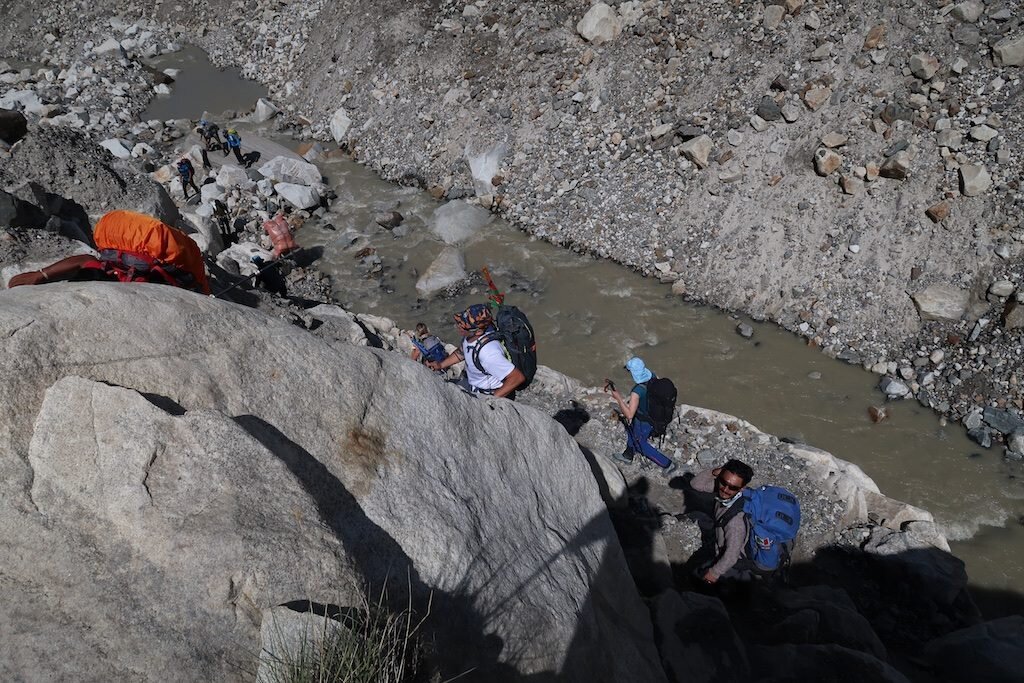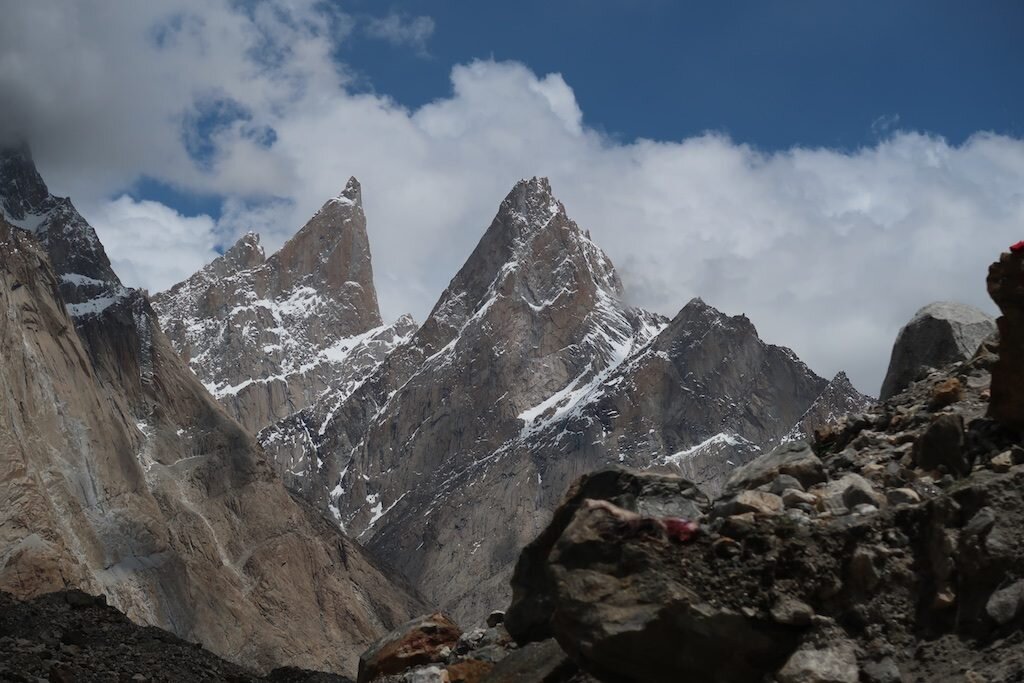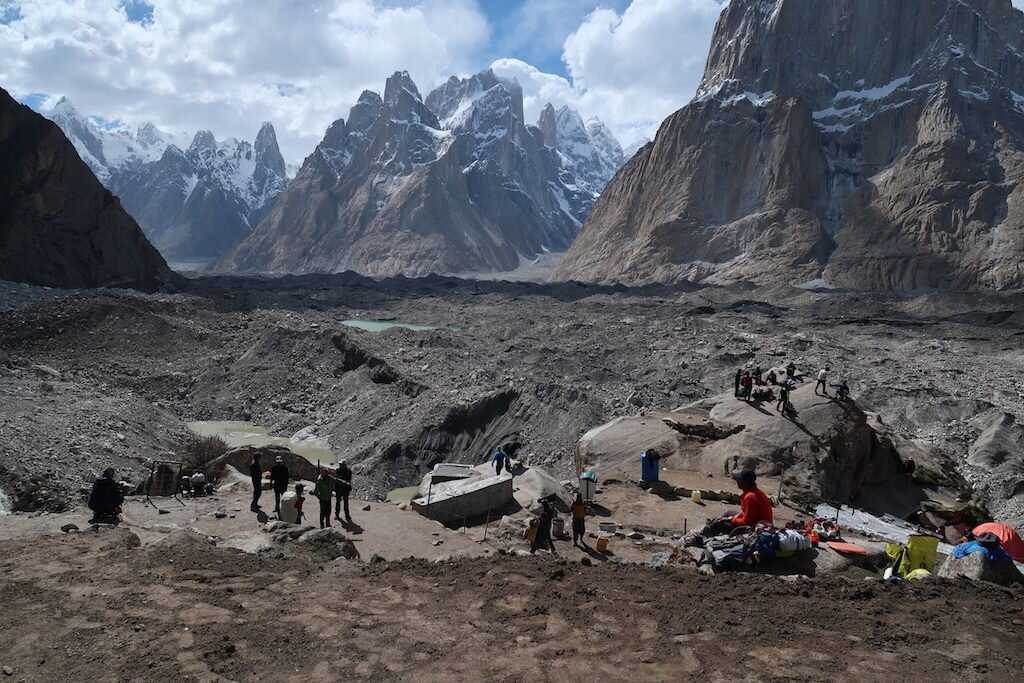Made it to the bottom!
After two weeks of travel, logistics and trekking, I’vearrived at K2 base camp in one piece. This trip, I’m going to try (given mylimited electricity, internet and effort) to give a more detailed lens intowhat an expedition is really like. Frankly, it’s what I’ve wanted to read thiswhole time so why not start sharing now?
I arrived in Islamabad’s beautiful new airport on June 16after about 30 hours of travel. The next morning, our team flew to Skardu. Unfortunately,during check-in, I puked in a trash can. GI issues seem to be one of the nearlyinevitable aspects of this type of international travel. I haven’t recoveredfrom this bug but I feel like I’m on the right track now.
We had to spend an inordinate amount of time in Skardu “waitingfor permits,” which I think is a Pakistani catch-all excuse. What really happened,I believe, is that our operator, who is running three expeditions, wanted themall to go together so he could save money. As soon as the third team arrived,magically our permits were issued! Anyhow, we’re being well taken care of so I’dbetter not complain too much!
I’ll break the trek into two portions, covering the legs tothe glacier here and the glaciated portions next.
June 21: Skardu to Askole
One of the classic crazy jeep rides in the world! I was actually astonished to see how good the road has become. It’s been steadily improving over the years. This time there were only a few sections where I felt like we were going to fall into the raging Braldu river. I don’t have photos this year but do reference my 2017 K2 coverage to see just how wild this ride can get.
June 22: Askole to Jhula
Arriving in Askole you get a sense of just how big of anoperation a Karakoram expedition is. To support our expedition, we hired 219local porters, each earning about $12/day. A standard load is 25 kg (60 lbs).These guys are literally hungry…I always tried to give about 1/3 of my lunchaway. There are also quite a lot of donkeys, though as you’ll see in the photosthis is a very challenging route for them as well. A donkey carrying one of my bagsfell into a water-filled crevasse. Fortunately, the donkey was rescued thoughmy bag was absolutely soaked.
On to the walking! Setting off from Askole is alwaysexciting. It’s the start of a long journey and the last glimpse of a road forover a month. The first two days of this trek are quite challenging. They’re bothlong and relatively flat, but with awkward rounded cobbles and sand. Not tomention the weather, which can range from 100-degree heat to snow. It’s hard toprepare for and the conditions are always changing. Fortunately for us, thesedays were mostly cloudy which made the temperatures less brutal.
One of the most challenging aspects of the entire trek is that all of the equipment must be packed and then transported all while you have already started walking, meaning that all of the team’s resources are quite far behind. This is no truer than on the first day, where porters pick up their loads, go home, eat breakfast and say goodbye to their families all before starting to walk (at a slow pace as they’re carrying a heavy load). This year was the most extreme example of this, where we arrived in Jhula six or seven hours before most of our things. For this reason, I always carry much more clothing than I’d ever normally need including things like down booties, synthetic insulated pants, lots of jackets, fresh base layers and always a pair of dry socks.
June 23: Jhula to Paiyu
Rinse and repeat. This is a big and deceptively hard dayalong the Braldu River. Conditions constantly change and the trail just keepson going.
June 24: Paiyu rest day
Not much to report here! I did very little aside from eat asmuch as I could. In 2017 we skipped this rest day and I greatly appreciated theaccelerated schedule, but this is a big deal for the porters if no one else.
June 25: Paiyu to Urdukas
Possibly the hardest day on the trek. There’s a lot of elevation gain, a lot of loose rock, a fair amount of scrambling on boulders, glacial river crossings everything. But you’re rewarded with some of the finest mountain scenery in the world. This is where you leave the metamorphic rocks behind and enter the world of granite and ice. First the Cathedral Peaks, then Uli Biaho and the incomparable Trango Towers come into view. I believe Urdukas is the best campsite in the world. It’s also the last grass we’ll see for a month.
Bonus tidbit: I'll discuss my technology setup in greater detail later, but this took hours to do. I had to charge devices and plan for this yesterday, and now I sit in my tent in a snowstorm. My fingers are too cold for the trackpad to recognize. Good times!



